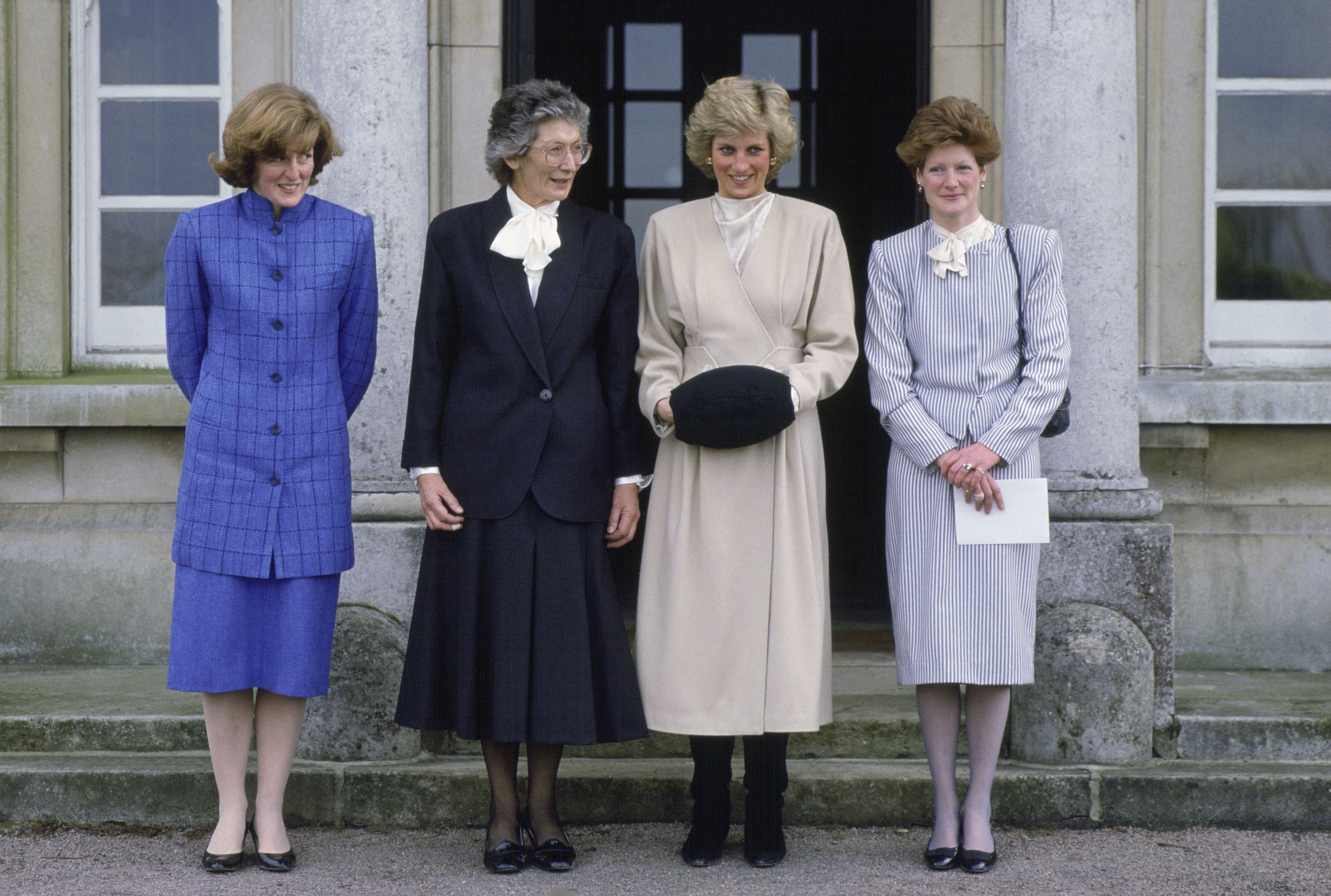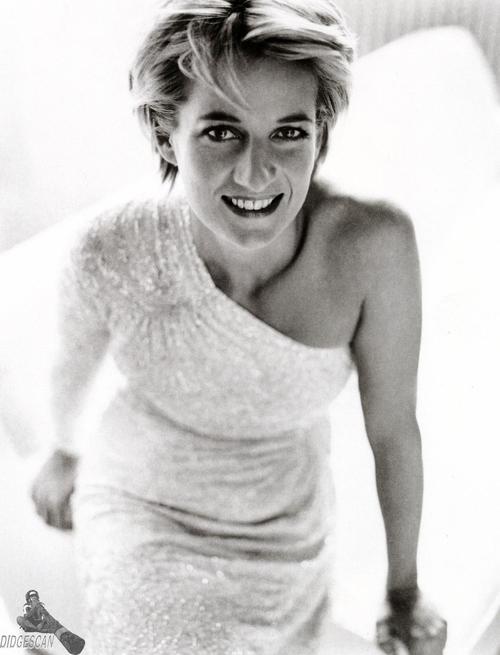The “Unsuitable” Princess — How Diana, the Quietest Spencer Sister, Became the Heart of a Nation

Before she was the most photographed woman in the world, before she became a global symbol of compassion and grace, Lady Diana Spencer was simply the youngest of three daughters — quiet, shy, and, in the eyes of everyone around her,
Among the Spencer sisters, Diana was never the obvious choice for royalty. She didn’t dazzle like her eldest sister, Sarah, nor command quiet respect like the middle sister, Jane. Yet history, with its poetic sense of irony, chose
🌹 Lady Sarah: The One Who Almost Became Princess
Before Diana ever met Prince Charles, it was her sister
Sarah was charismatic, intelligent, and confident — a natural fixture in London’s upper-class circles. When she and Charles began dating in the late 1970s, society pages buzzed with anticipation. The pairing seemed destined.
They skied together in Switzerland, attended balls, and dined at Sandringham. The royal family appeared to approve. For a brief moment, everyone believed Sarah would one day become Princess of Wales.
But one careless remark changed everything.
During an interview, a reporter asked her about her relationship with the heir to the throne. With the blunt honesty of youth, Sarah replied:
“I wouldn’t marry Charles if he were the dustman or the King of England.”
Those words — innocent in tone, disastrous in effect — sealed her fate. When Charles read the interview, he was reportedly humiliated. The romance ended abruptly.
In later years, Sarah laughed about it, saying she had introduced Charles to Diana and therefore could “always claim to be Cupid.” But deep down, she knew the truth: her chance to make history had vanished with a single sentence.
🕊️ Lady Jane: The Quiet Aristocrat
If Sarah was the bold one, Lady Jane Spencer was her opposite — calm, polished, and dignified. She married Robert Fellowes, an assistant private secretary to Queen Elizabeth II, and slipped quietly into royal-adjacent life.
Lady Jane understood the workings of the palace better than anyone in her family. Behind her soft manners was a keen awareness of how fragile life at court could be — the politics, the pressure, the lack of privacy.
When her younger sister Diana became engaged to Prince Charles, Jane is said to have cautioned her against rushing into marriage.
She had seen the toll royal life could take, even from a distance. But Diana, swept up in the whirlwind of fairy-tale romance, didn’t want to listen. She was nineteen, in love, and believed — as all young dreamers do — that love could conquer everything.
Jane, out of loyalty, stood by her anyway. On Diana’s wedding day, she read a passage from the Bible — words that would later seem heartbreakingly prophetic about love, endurance, and faith.
🌸 Diana: The “Ordinary” One
Diana Frances Spencer was different.
She wasn’t the most studious — her teachers at West Heath described her as “sweet, kind, but not academically outstanding.” She wasn’t the most worldly or the most confident. In fact, she often blushed, spoke softly, and preferred the company of children to adults.
Her sisters moved through London’s high society like swans. Diana was still finding her place. She dreamed of becoming a ballerina, loved animals, and volunteered at a kindergarten. She had the kind of warmth that didn’t demand attention — it simply drew people in.
When she first met Prince Charles at Althorp, she was just 16. He was dating Sarah at the time. Their paths crossed again years later — after Sarah’s romance with Charles had ended — and this time, something unexpected sparked.
Charles found Diana’s innocence refreshing. She found his world fascinating.
Within months, the shy girl who once felt invisible among her sisters was suddenly the center of a royal fairy tale.
💍 The “Unsuitable” Choice Who Captured the World
When Charles proposed after only 13 meetings, many thought it was too soon. But the engagement was announced, the sapphire ring glittered, and Diana — the quiet Spencer girl who’d never stood out — was about to become the most famous woman on Earth.
No one could have imagined what would follow.
She might not have been the clever Sarah or the composed Jane, but Diana had something neither of them did — emotional instinct.
What the monarchy saw as naïveté was, in truth, empathy.
What the palace viewed as weakness became her greatest strength.
She didn’t just shake hands; she touched hearts.
She didn’t just wear crowns; she wore humanity.
And that was something no protocol could ever teach.
👑 The Legacy of the “Least Suitable”
Looking back, there’s a certain poetry in the story of the Spencer sisters.
Sarah had the charisma. Jane had the composure. But it was Diana — the quiet, uncertain girl — who had the soul that could move the world.
She was the one who turned her pain into purpose, who transformed royal aloofness into warmth, who showed that being royal isn’t about bloodlines — it’s about being real.
Even now, decades after her death, Diana remains the most beloved royal of all time.
Not because she was born for it. But because she grew into it — through heartbreak, courage, and a love for humanity that outshone the crown itself.
Three Royals Who Might Have Lived Longer: What Fate—and Choices—Took Away
History often remembers royalty as immortal figures—portraits on coins, faces on stamps, and names etched into ceremony. Yet behind the crowns and palaces lie lives as fragile as any other, shaped by choices, circumstance, and cruel twists of fate.
There are three members of the British royal family whose lives might have stretched far longer, had fate, or their own habits, been different. Their stories are not only about what was lost, but about what might have been.
Princess Margaret: A Life of Fire, Cut Too Short
Born into the same line of strength and longevity that blessed her mother, Queen Elizabeth the Queen Mother, Margaret should have lived to a ripe old age. Her sister, Queen Elizabeth II, carried those hardy genes well into her nineties. Margaret, too, was blessed with vitality at birth.
But Margaret’s spirit was always different from her sister’s. Where Elizabeth embodied discipline and duty, Margaret gravitated toward glamour and indulgence. Her quick wit and striking beauty drew admiration, but also temptation. Smoking and drinking became constants in her daily life—small indulgences that hardened into habits.
Those habits, over time, exacted their toll. The once radiant princess aged before her time, her health declining in ways that contrasted starkly with her sister’s resilience. In the end, Margaret died in 2002 at the age of 71—twenty-five years before Elizabeth. The difference between the two sisters was not genetics, but lifestyle. Margaret could have lived as long as her sister. Instead, her choices cut short a life that might have shone far brighter, far longer.
Princess Diana: A Future Stolen by Speed and Cameras
Few royal lives still echo with such poignancy as that of Diana, Princess of Wales. By 1997, Diana had survived heartbreak and the dissolution of her marriage, but had emerged with a sense of freedom that many believed would define a brilliant second chapter of her life.
She had found love again. She was adored not only in Britain but around the globe. Most importantly, she was a devoted mother to her two young sons, William and Harry, whose lives she shaped with compassion and warmth.
Yet Diana was also hunted—pursued relentlessly by paparazzi who saw her pain, her joy, even her solitude, as commodities to be bought and sold. On the night of August 31, 1997, that pursuit turned lethal. A speeding car, a dark Paris tunnel, flashing cameras in the rearview mirror—Diana’s life ended in chaos, leaving her sons to walk behind her coffin before the eyes of a grieving world.
Had the press shown restraint, had the driver slowed, had security been stricter—Diana might be alive today, perhaps a grandmother now, watching her grandchildren grow. Instead, she remains forever frozen at 36: radiant, compassionate, and gone too soon.
King George VI: The Reluctant Sovereign
King George VI—known to his family as “Bertie”—never expected to wear the crown. As the younger son of King George V, he lived most of his early life in the shadow of his elder brother, Edward. Introverted, shy, and plagued by a stammer, Bertie was unsuited by temperament for the stage of kingship.
But when Edward VIII abdicated in 1936 to marry Wallis Simpson, Bertie was thrust onto the throne. His reign was marked by courage: guiding Britain through World War II, refusing to abandon London during the Blitz, and embodying the quiet strength his people so desperately needed.
Yet the strain was immense. George VI was a heavy smoker, his health deteriorating under the pressure. In 1952, at only 56 years old, he died of lung cancer. His early death left his daughter, Elizabeth, to take the throne at just 25.
Had he lived longer, Elizabeth might have enjoyed more years of youth and freedom before duty claimed her life. And George VI himself, had he been less burdened by pressure and cigarettes, might have continued to guide the monarchy with the humility and steadiness that made him beloved.
Lessons in Fragility
Princess Margaret, Princess Diana, King George VI: three very different lives, three very different endings. One undone by habits, one stolen by circumstance, one worn down by duty.
Their stories remind us that royalty, despite wealth and ceremony, does not guarantee longevity. Choices matter. Circumstances matter. And fate, inexorable as it is, often writes the final chapter.
For those who loved them—and for those who still mourn them—the ache lies not only in their passing, but in the haunting thought: they could have lived longer.








